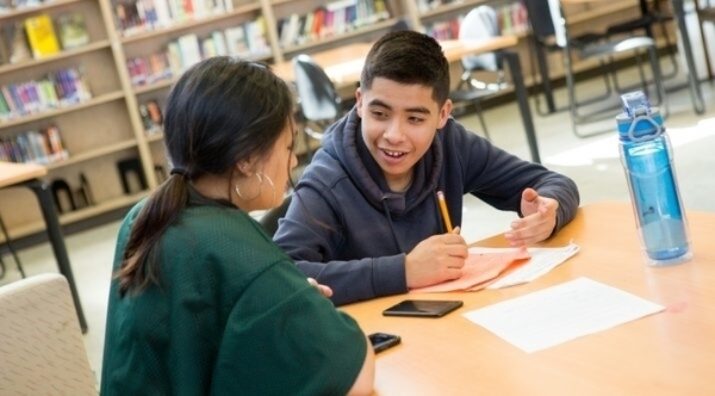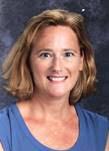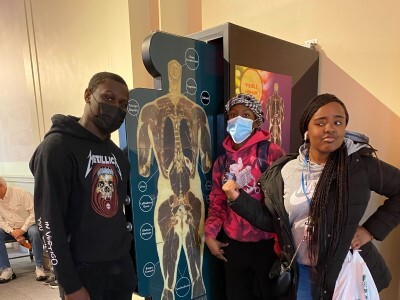Many Hats, One Purpose: How Moving Back to the Classroom Has Impacted My Instructional Leadership
Topics

Educators are rethinking the purposes, forms, and nature of assessment. Beyond testing mastery of traditional content knowledge—an essential task, but not nearly sufficient—educators are designing assessment for learning as an integral part of the learning process.
A teacher reflects on her experience with a statewide initiative to reconsider assessment, and how she now works inside her classroom and out to create a more humane, student-centered K-12 system.
Back to Reality
“Can I go to the bathroom?”
I hadn’t had this question posed to me in four years, so it was a shock when a quiet fifteen-year-old sophomore in my third period class asked it during my first days back in a classroom this August.
I’ve always struggled with the idea that we humans have created an educational institution wherein a human being needs to ask another human being out loud if they can exercise their human right to utilize the restroom when they want or need to. Schools and prisons are the only systems I can think of that demand this demeaning action perhaps a billion-plus times per day of the young and adult.
Before I transitioned from teaching in 2016 to collaborate on a statewide effort to rethink assessment, I had the policy that students should never have to ask me that question; they had the right to leave my classroom for any personal reason at any time, as long as they somehow communicated to me that they were leaving and if, and when, they might return.
Now, back in the classroom, I am again committed to providing a group of tenth grade students a more humane and respectful learning experience in this system of school, through small ways like class “policies” and big ways like the instructional and assessment experiences that I had spent the past three years learning about and attempting to implement within and across school districts.
I want to be the voice for student-centered understanding as an outcome of a student-centered system.
Shifting the Focus from System to Student
From August 2016 through August 2019, I had the most fortunate opportunity to collaborate with learners and leaders across Virginia to reconsider assessment for learning through a Networked Improvement Community (NIC). We aimed to ensure that at least 10,000 students across Virginia would have a “student-led assessment” experience. These assessment experiences took many forms, from capstone assessments, to presentations of learning and student-led conferences, to student-driven projects in high school anatomy and physiology classes or fourth grade history.
We met our goal, according to our internal measurements and self-reporting from participating districts. But more importantly, more students were raised up as the most important members of the education system. When we spoke of student-led assessment, we were really speaking of student-led learning. Mostly, we were speaking of a more humane, student-centered system. I learned that developing an understanding of, and a school-wide or system-wide culture of, a student-centered system was absolutely necessary to ensure that student-led learning and assessment could occur with fidelity and integrity.
Asking the Important Questions of the Most Important People
How would we know we were improving the system? How would we know when student-led learning and assessment was happening? These were the questions we constantly asked ourselves. Our 11-district NIC created a student-led assessment continuum with descriptors. We then asked teachers and district curriculum leaders to review their assessments against the continuum to see where aspects of the assessment could be revised to be more student-led.
But even if the NIC evaluated an assessment that met most or all of the criteria as “mostly evident,” how could we really be sure the learning process AND assessment were student-led? Why, let’s ask the students. A novel idea. It will be no surprise to many that students have an innate sense of when student-led learning and assessment happens in process and product, and when it does not. For example, when asked if their capstone assessment was student-led according to our six criteria on the continuum, 123 of 159 high school sophomores through seniors could name how the process and products of the assessment met the criteria. The other 36 students provided compelling insights as to how and why the assessment did NOT meet the criteria.
From Big Picture to the Every Day: How Does This Knowledge and Experience Impact Me as a Teacher and Instructional Leader in my School?
Before I left the classroom, I believed in project-based learning and performance assessments that were student-focused. I also obviously believed in ensuring a student’s basic human rights and dignity as a primary daily duty. Now, as a teacher who teaches 90 tenth grade students and is part of a school administrative team that is trying to shift the culture from a system-centered culture to a more student-centered culture, I find that I need to do more than just provide meaningful projects and unlimited bathroom passes. I need to champion the student every day and minute that I am with them, and every day and minute that I am not.
When I am with my students, I am looking for ways to ensure that they feel valued, and that their interests and personal abilities are the entry point for their learning. A student who is struggling to understand MacBeth is not resisting the learning, but needs to make some connection between MacBeth and her or his life experiences. I ask myself, “What is student-led about reading MacBeth?” How can I collaborate with students to make our learning about MacBeth relevant to our shared and personal experiences?
When I am not with my students, I am collaborating with teachers and our administrative staff to find connections between content that is student-centered. I am finding ways to discuss assessments as experiences rather than grades in a gradebook. I ask, “How can we help a student understand what he or she knows and wants to know? How can we help a student figure out what the next steps in understanding might be?” Not, “What is the student’s grade on this assignment?” Overall, I want to be the voice for student-centered understanding as an outcome of a student-centered system.
Thank Goodness for Rolling Gradebooks and New Considerations Going Forward
Students and I use a cumulative grade book in my classes. As a student develops skills and demonstrates understanding and applied knowledge throughout the year on essential skills, standards, and content, their grades from earlier in the year are replaced with scores that reflect a higher level of mastery. I am thankful for the rolling gradebook as a teacher, too. As I returned to the classroom after three years away, I’ll admit here as I admitted to my students, I was a little rusty. The students and I are, together, collaborating to learn and move toward mastery and a higher level of understanding every day. Together, we will get there.
Perhaps, the goal is not to choose between being “student-led” or “system-led,” but rather to be “co-constructed,” “co-designed,” or “co-created.” It may be time to consider a truly equal balance of learning and leading.
In the meantime, please leave the room whenever you want or need. No need to ask me or tell me. I’ll be here thinking about ways to collaborate to learn more together.
Photo at top courtesy of Allison Shelley/The Verbatim Agency for American Education: Images of Teachers and Students in Action.




